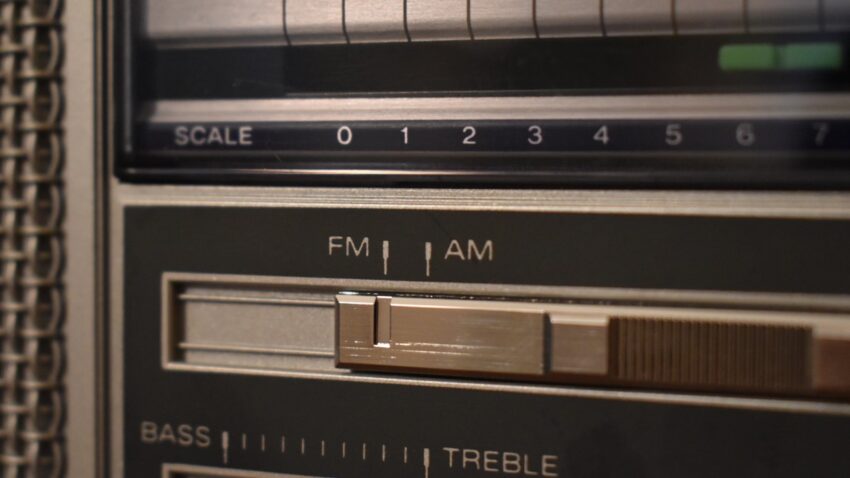Wisconsin Public Radio’s recent announcement about a major realignment of its programming sparks the question of how Wisconsin compares with other states when it comes to public radio networks.
First, here’s a quick chart comparing the offerings. The network listed in the first column is the one that carries Morning Edition and All Things Considered. (HD-only or streaming services are not included.)
| Network 1 | Network 2 | Network 3 | |
| Iowa Public Radio | News/AAA | Classical | News (AM only) |
| Minnesota Public Radio | News | Classical | AAA |
| Nebraska Public Media | News/Classical | ||
| Prairie Public (North Dakota) | News/Classical | AAA | |
| SDPB Radio | News/Jazz/AAA | ||
| Wisconsin Public Radio (current) | News/Classical | News | |
| Wisconsin Public Radio (May 20) | News | Classical | |
| Wyoming Public Radio | News/AAA/Classical | AAA | Classical |
| CBC | News | Classical/AAA |
Iowa Public Radio is the youngest of the Upper Midwest’s public radio networks, having been formed in the early 2000s as a merger of previously-competing public radio stations at the three state universities. IPR suffers from inconsistent coverage, particularly in western Iowa, and the AM News network is the only one that can claim at least fringe coverage of the entire state. Most of the network’s largest FM signals carry its News service during the day (in simulcast with the AM network) and switch to “Studio One” Adult Alternative in the evening and overnight hours. “Studio One” is also available as a 24-hour stream.
Minnesota Public Radio is one of the largest public radio organizations in the country. Its News and Classical services were created as part of an aggressive network buildout in the 1980s, culminating with the 1991 purchase of WLOL/99.5 (Minneapolis), giving MPR two strong FM signals in most of the state. “The Current” Adult Alternative service was added in 2005 and has expanded to several markets outside of the Twin Cities. Several additional HD subchannels are available in the Twin Cities.
Nebraska Public Media operates one network covering all of the state except Omaha, which is served by locally-owned public radio stations. The network carries the legacy public radio format of Morning Edition, All Things Considered, and Classical music. It operates an HD2 service carrying additional News programming during the day and Jazz in the evening and overnight.
North Dakota’s Prairie Public Radio carries News and Classical music on its primary network and “Roots, Rock, and Jazz” on several stations and HD subchannels. In Fargo, where it competes with MPR, PPR’s station carries Morning Edition and All Things Considered but switches to “Roots, Rock, and Jazz” at other times.
South Dakota Public Broadcasting operates one network covering the entire state. The network carries News programming all day, with Jazz and The World Cafe in the evening. Classical, which formerly made up part of the main network’s schedule, now only airs on HD2 channels. Both audio services are simulcast on SDPB’s TV network. SDPB Radio competes with MPR’s News and Classical services in the state’s largest city, Sioux Falls.
Wisconsin Public Radio‘s current setup consists of one network mixing News and Classical and a second service, the Ideas Network, airing additional long-form News programming. 24-hour Classical is offered on HD subchannels in four markets. Starting May 20, one network will carry News and the other Classical. WPR has signals reaching most of the state, but some listeners can only receive one station, most notably in Milwaukee.
Wyoming Public Radio may be just outside the Upper Midwest, but it has an interesting setup. The service has one main network that reaches the entire state plus AAA, Classical, and Jazz services reaching parts of the state. (The Jazz service has only one full-power station.) The main statewide network carries News programming along with three hours of AAA in middays, three hours of Classical in evenings, and simulcasts of the Jazz service on the weekend. It’s an interesting model of how to provide four services even though some listeners can only receive one station.
The Canadian Broadcasting Corporation‘s Radio One focuses on News with some entertainment shows. (It is a national network but is included here for comparison.) CBC Radio One is available in every populated part of Canada. Regional programming is carried in morning drive, the noon hour, and afternoon drive. CBC Radio 2 is only available in larger cities and carries a mix of Classical and Adult Alternative programming. Its sister French-language service, Radio-Canada, offers a similar setup of networks.

